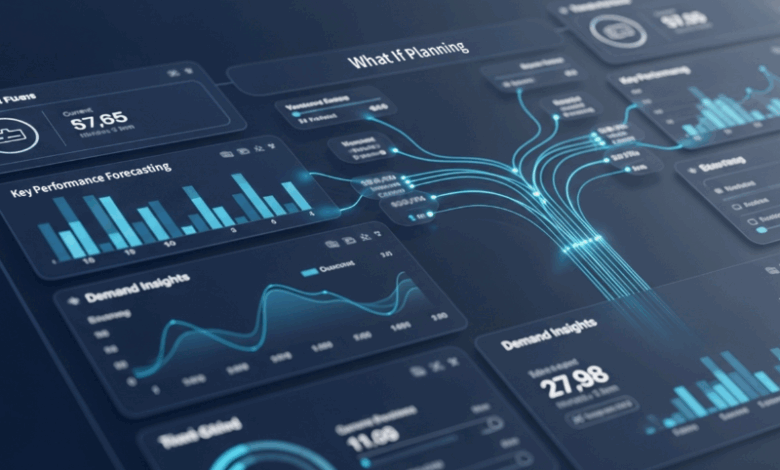
The culmination of necessity and innovation, artificial intelligence has become a cornerstone of retail growth by helping brands understand customers, forecast demand and deliver seamless, personalized shopping experiences across channels. But simply retrofitting AI onto outdated systems won’t cut it. True multi-channel success depends on super-integrated AI and solutions that are built with connectivity and adaptability at their core. When AI is deeply embedded across sales, inventory and customer touchpoints from the start, it delivers faster insights, smarter decisions and the agility retailers need to thrive in today’s dynamic market.

AIl-in-One AI Wins: Unlocking AI’s True Potential
As I discussed in the post “How Retailers Can Spot Fake AI,” the true value of AI lies beyond a standalone module—it must be integrated throughout the system to provide context and end-to-end analyses that impact your bottom line.
AI’s power is in identifying risks/opportunities by accounting for multiple variables at an incredible speed. For multi-channel retail brands, this means embedding AI in every part of the process while also adapting to the unique demands of each channel—all within a unified platform. An all-in-one AI system not only enables smarter decision-making for each channel, but also shows how they each fit into the broader strategic goal; brands are able to analyze performance from the lens of channel-specific KPIs and make informed business decisions based on comprehensive insights from complete demand.
Wholesale account planning is different from DTC store planning or ecommerce marketplace planning—your processes and AI usage should reflect that. With super-integrated AI solutions, multi-channel brands are able to drill in on the nuances of different channels and seamlessly understand how they contribute to the big picture.
The Pitfalls of Retrofitting
Retrofitting AI solutions for each channel can offer quick wins, but often at the cost of complexity, fragmented processes and missed potential. An overlooked risk when applying AI across retail channels is the misalignment between assumptions baked into the model and the realities of the channel it’s being applied to.
AI-native systems for DTC needs are optimized for direct consumer behavior and needs, analyzing real-time demand for each SKU at each location—data is plentiful, feedback loops are fast and decisions are granular. AI for ecommerce adds another layer to consider digital marketing promotions, algorithmic search optimization and product placement on the page. AI systems for wholesale have a different foundation, where the crux of the need is centered around bulk orders for department stores, independent retailers, franchises, etc., including the lead times for accounts and the seasonality of products.
Retrofitting AI limits its accuracy, as the system learns from behaviors that don’t align with the channel’s realities—resulting in mismatched optimization recommendations due to differences in:
-Demand Patterns: frequent transactions vs fewer transactions in large quantities
-Forecasting Horizons: daily/weekly adjustments vs seasonal adjustments months in advance
-KPIs and Optimization Goals: conversion rate vs order fill rate
This misalignment due to channel-specific nuances leads to poor planning decisions and inventory mismanagement, under-realizing AI’s full potential.

Integrated AI: Powering the Next Generation of Multi-Channel Retail
The next generation of multi-channel retail success depends on a retailer’s ability to deliver consistent, personalized experiences across every channel from ecommerce marketplaces and mobile apps to brick-and-mortar stores and wholesale partners. Utilizing AI-native platforms that consider the state of the union across functions, revenue streams and more, it’ll be easier than ever to meet shopper demands. Truly integrated AI systems connect data from all touchpoints to improve forecasting and real-time merchandising decisions across the retail workflow—it’s not fragmented or layered on as an afterthought.
Integrated AI platforms, like 7thonline, make this possible by unifying pre-season and in-season data streams across the entire retail ecosystem: sales, stock levels, lead times, production orders, SKU demand and more. With bespoke functionality tailored to different selling channels, the platform helps retailers forecast demand with greater accuracy, plan more effectively and adjust quicker as market conditions change. With end-to-end visibility, retailers can reduce inefficiencies, improve margins and deliver a seamless experience for customers, no matter where or how they shop.
The future of retail won’t be defined by patchwork AI add-ons but by end-to-end. super-integrated platforms that analyze patterns, anticipate market shifts and recommend actions. Integrated AI solutions are able to empower decisions that align with the overarching strategy. It’s up to the retailers to apply the data-backed insight with their own expertise in order to maximize results.




